|
Getting your Trinity Audio player ready...
|
When I moved into my house about fifteen years ago, a silver maple near the back door was shading much of the yard, darkening views from the windows, and filling up gutters. Removing it could bring in some light and make the yard bigger, plus spare me frequent gutter maintenance. I love trees, but this one seemed to be in the wrong place.
I called an arborist with some trepidation, thinking he would try to talk me out of it. To my surprise, when Kevin Raftery came by, he not only agreed about the maple, he pointed out 8-10 other trees that should be removed. “This one is not in the right place. This one is too close to the house. This one will get too big. This one will cost you a lot of money to maintain.” All were young trees, but still, it got to the point where now it was me that was hesitating. But he was the expert, right?
Raftery wanted the remaining trees to be full and healthy. He pointed to one Chinese elm that had been pollarded (kept small), and said that it should be allowed to grow to its natural size. He kept a large, drought-tolerant California pepper in front, a healthy old olive tree with a gorgeous trunk, and a lush redwood hedge, among others. These have grown and thrived, and the result fifteen years later is even more tree canopy than when I moved in.
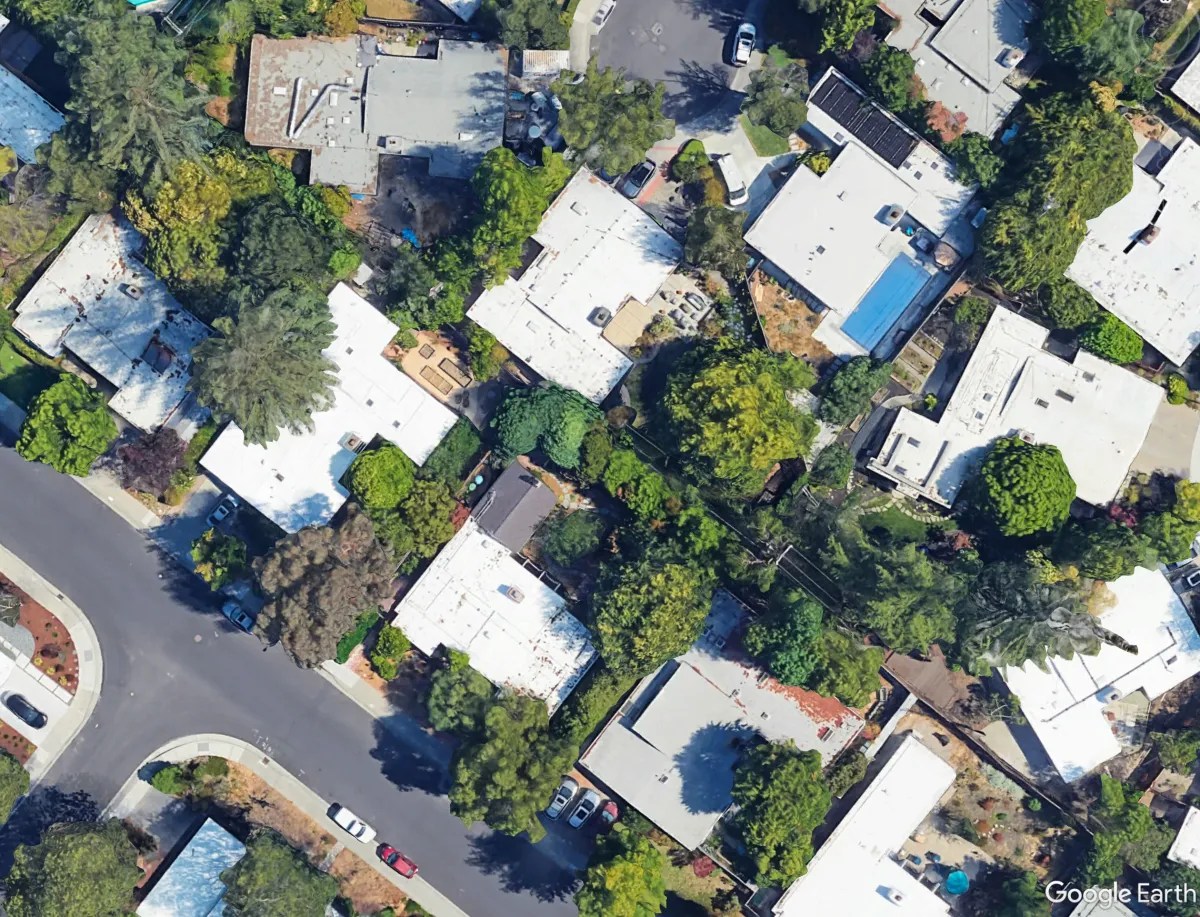
Every morning I wake up to birds, who seem to sing from dawn to dusk. I am lucky to not only have my own tree canopy but to have neighbors who have prioritized their canopies as well. It is not always easy having trees. Branches can fall. Maintenance has to be done. But they provide essential habitat for birds and other animals.
For this blog post, I thought I would take a few hours to sit outside in my backyard and see what I could learn about the birds in my yard. I have never done that before! I’ve enjoyed using the Merlin app’s “Sound ID” feature to get a sense of what birds are around. I’ve watched finches, titmice, and juncos at the birdfeeder on the side of the house. And I’ve seen activity around a few bird boxes. But I haven’t really sat and watched before. It was a mixed experience, as you will read.
One problem was that there wasn’t much going on for most of the time. I heard and saw some of the common birds in my yard, like finches (house finches, lesser goldfinches), chickadees (chestnut-backed), and hummingbirds (Anna’s).
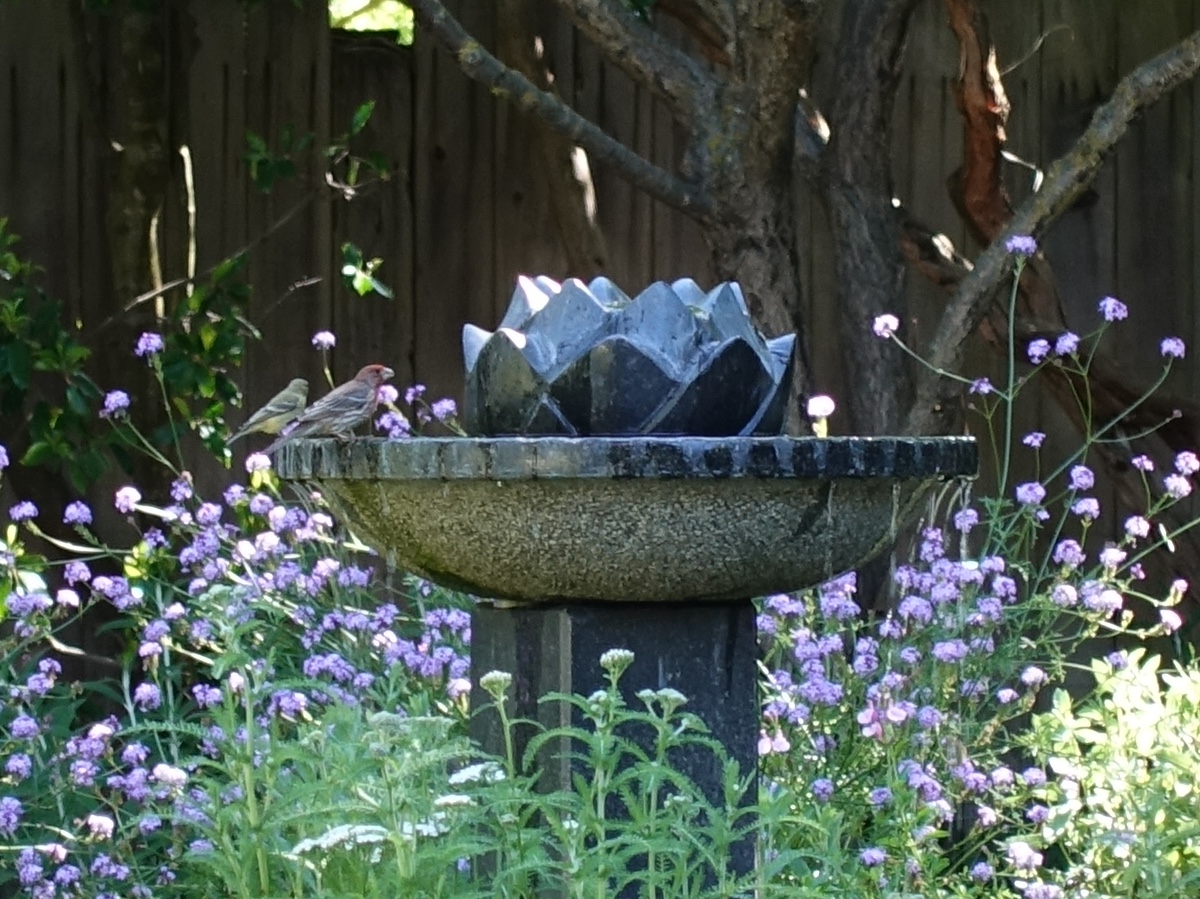
But a lot of the time there wasn’t much activity. I think that may have been because the birds could see me, even though I sat at the back of the patio, next to the house. Actually, I know to some extent that was true. After about an hour on the patio, a hummingbird flew towards me, hovered about two feet away, and made a slow circle around me. It was like in one of those science fiction movies, where aliens come down and inspect the humans. Did it want my bowl of strawberries? I don’t know. I tried to look harmless and it moved on.
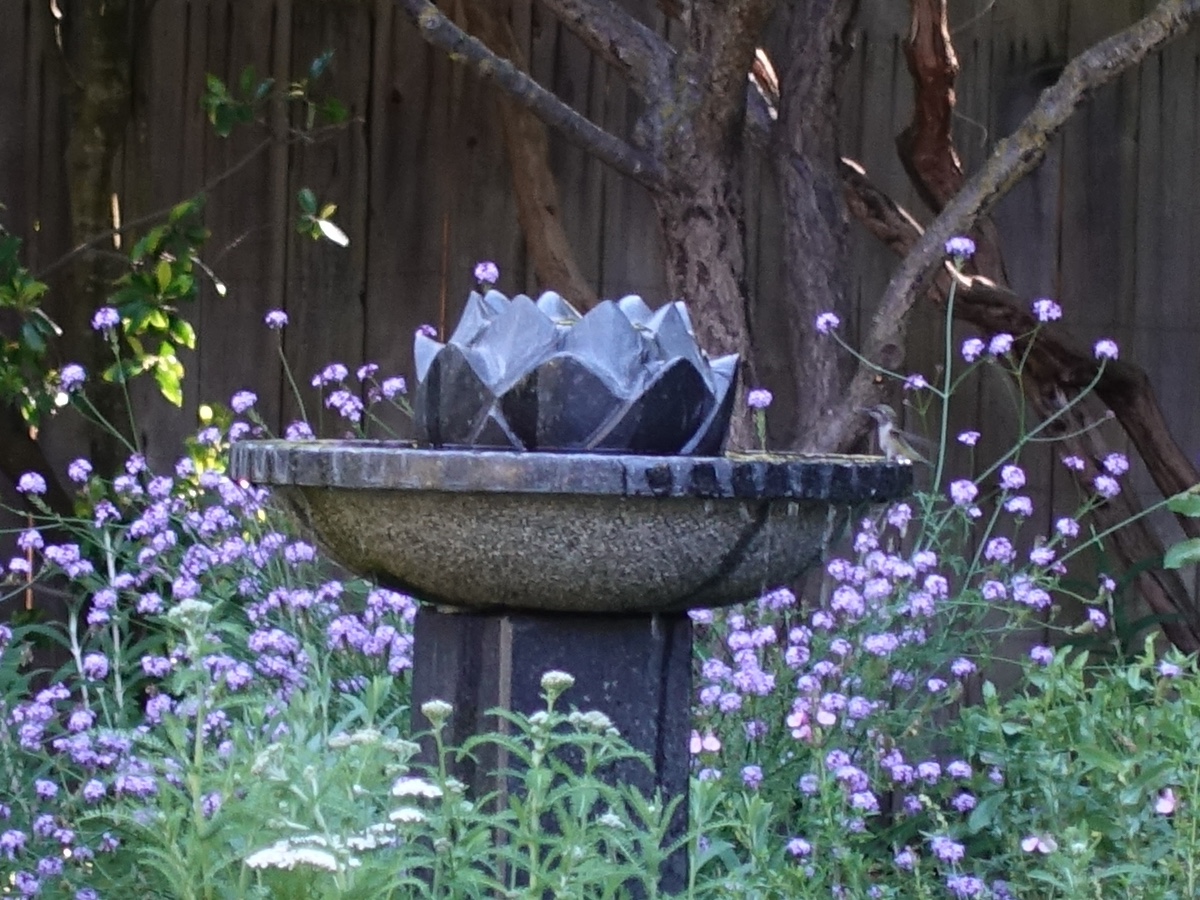
I noticed that the trees in the yard provide essential resting places and screening while the birds go to and from the fountain. I saw one bird bathe, then fly out to a tree to fluff, then go back to bathe. Or, for another example, every now and then a flock of cedar waxwings descends on my trees. They want to use the fountain but they are nervous. So they watch from the elm or plum until another bird is using it. Then they swoop down and take over.
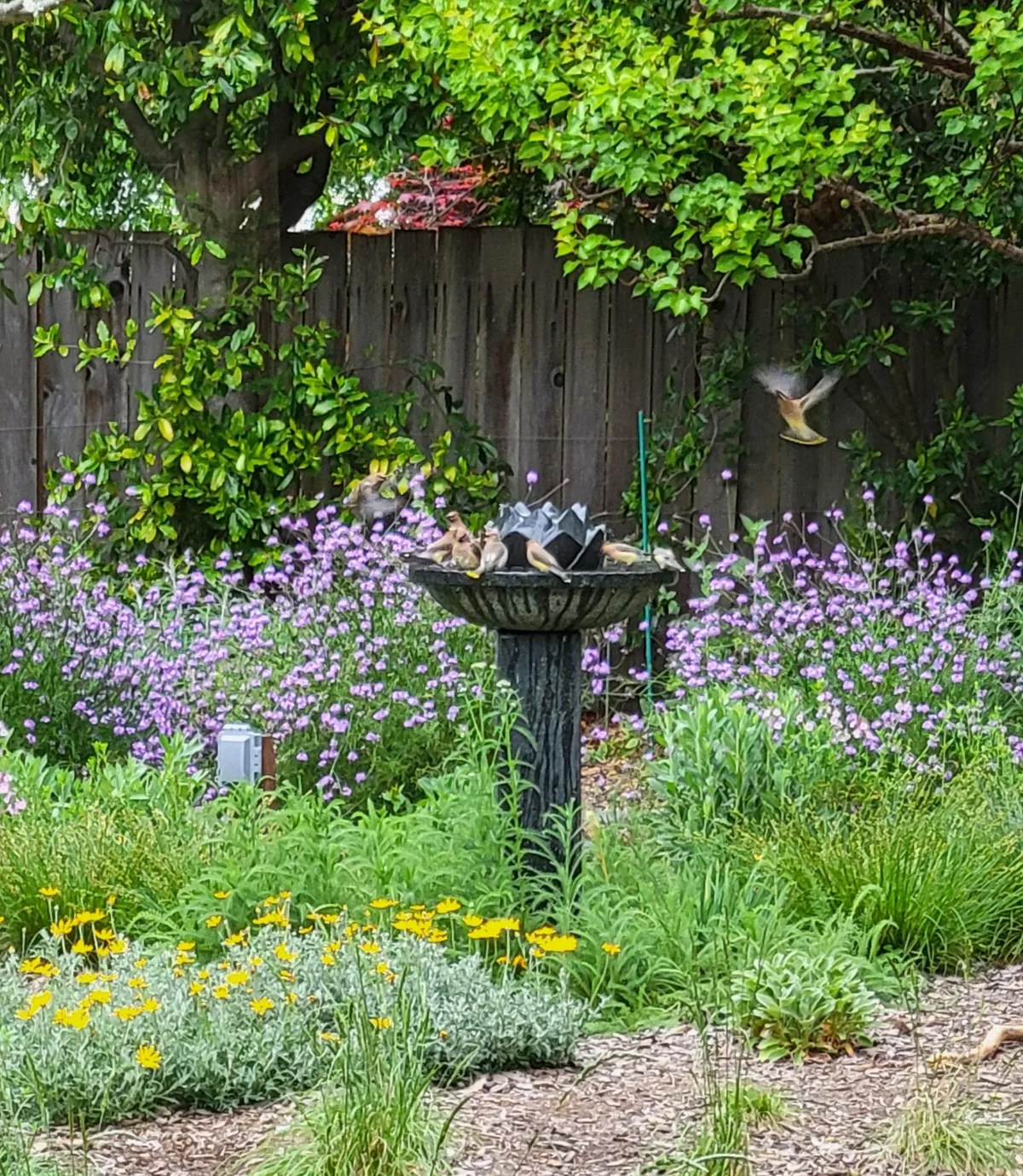
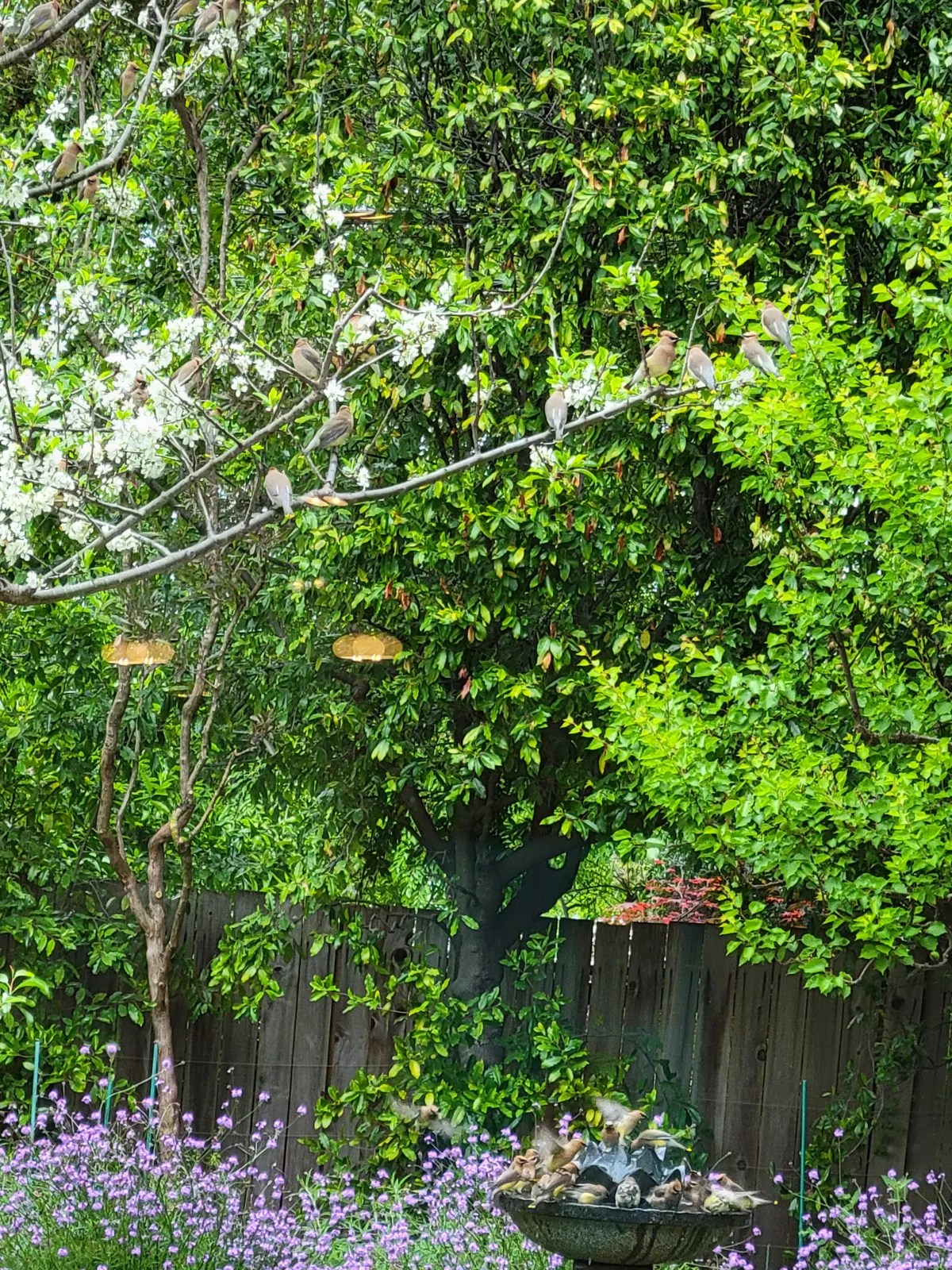
This morning there weren’t any cedar waxwings. There were, however, two notable events, one good and one bad. On the plus side, I heard and then saw a Western tanager, a bird that I had never seen before, though Merlin had reported hearing it in my yard. They are beautiful birds, and easy to spot.
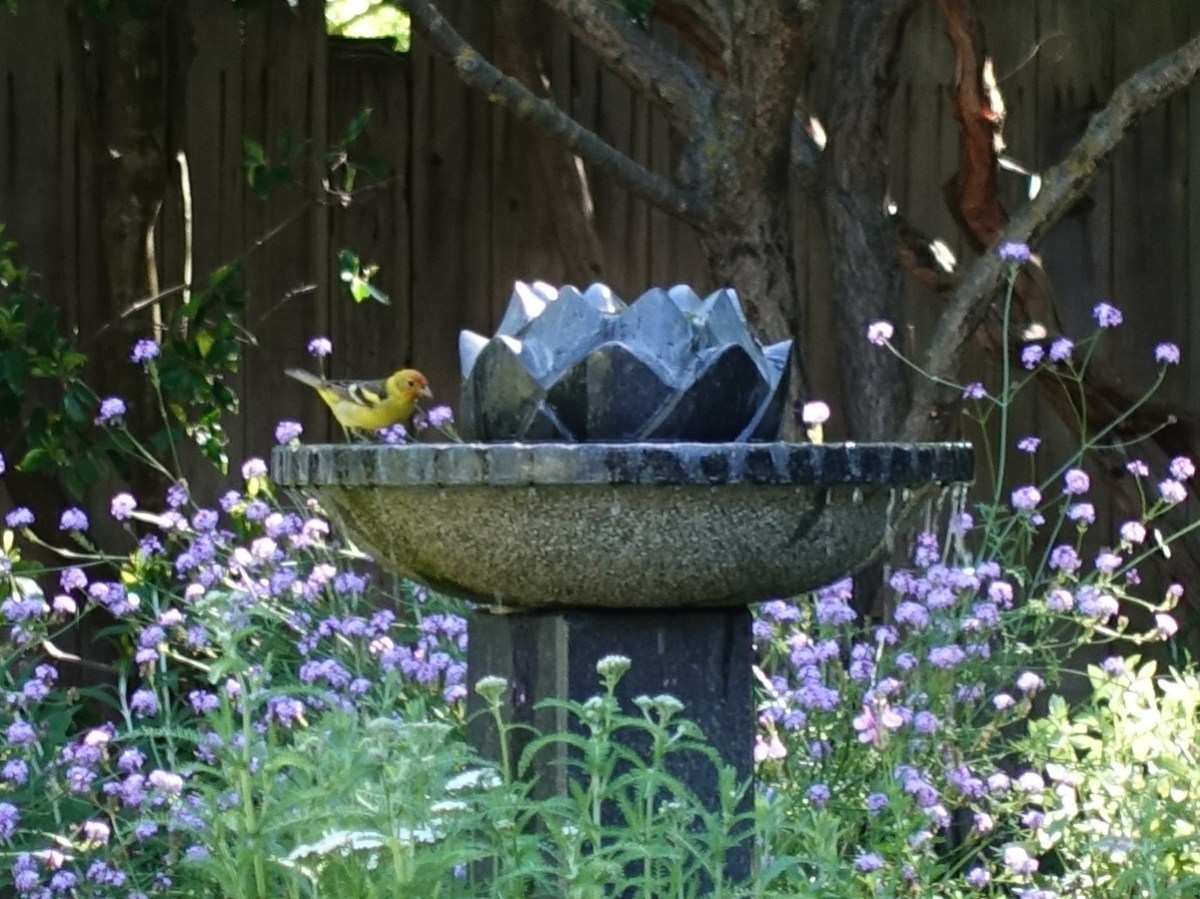
But something awful also happened. I saw a young tanager this morning that seemed too scared to alight on the fountain. Several times it approached and then flew away to rest on a tree. Then, to my dismay, it flew directly towards the house, under the covered patio, and into a window. It fell and lay stunned by the step.
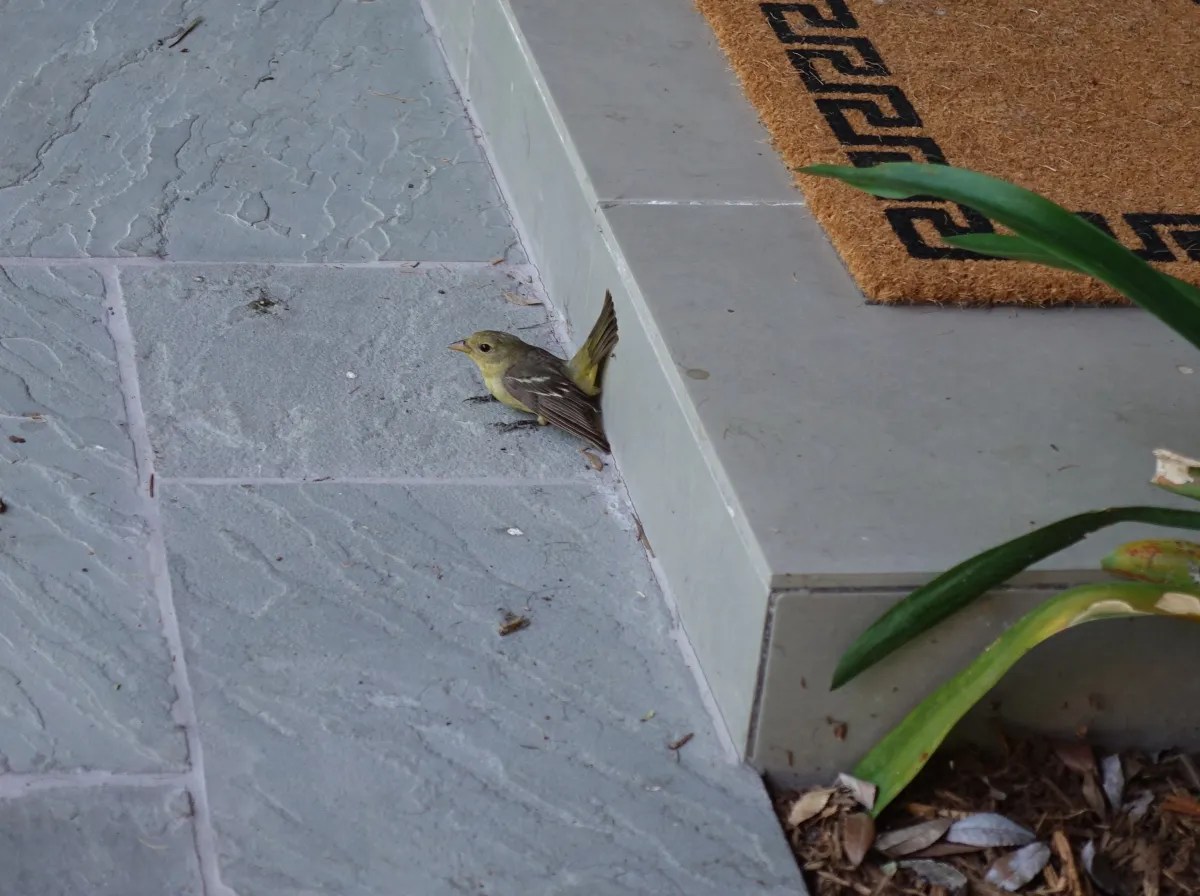
I felt terrible. I still feel terrible. I stayed where I was and after a minute it was able to fly away. But I did not hear it call after that. I hope it is okay.
I’m not a very good photographer so most of my photos are of the fountain. I pointed my small camera there and waited to press the shutter. But you don’t need a fountain to attract birds! In the evening I was amused to see a California towhee creating its own bath out of my dog’s water bowl. A group of these towhees was hopping around the yard looking for insects.
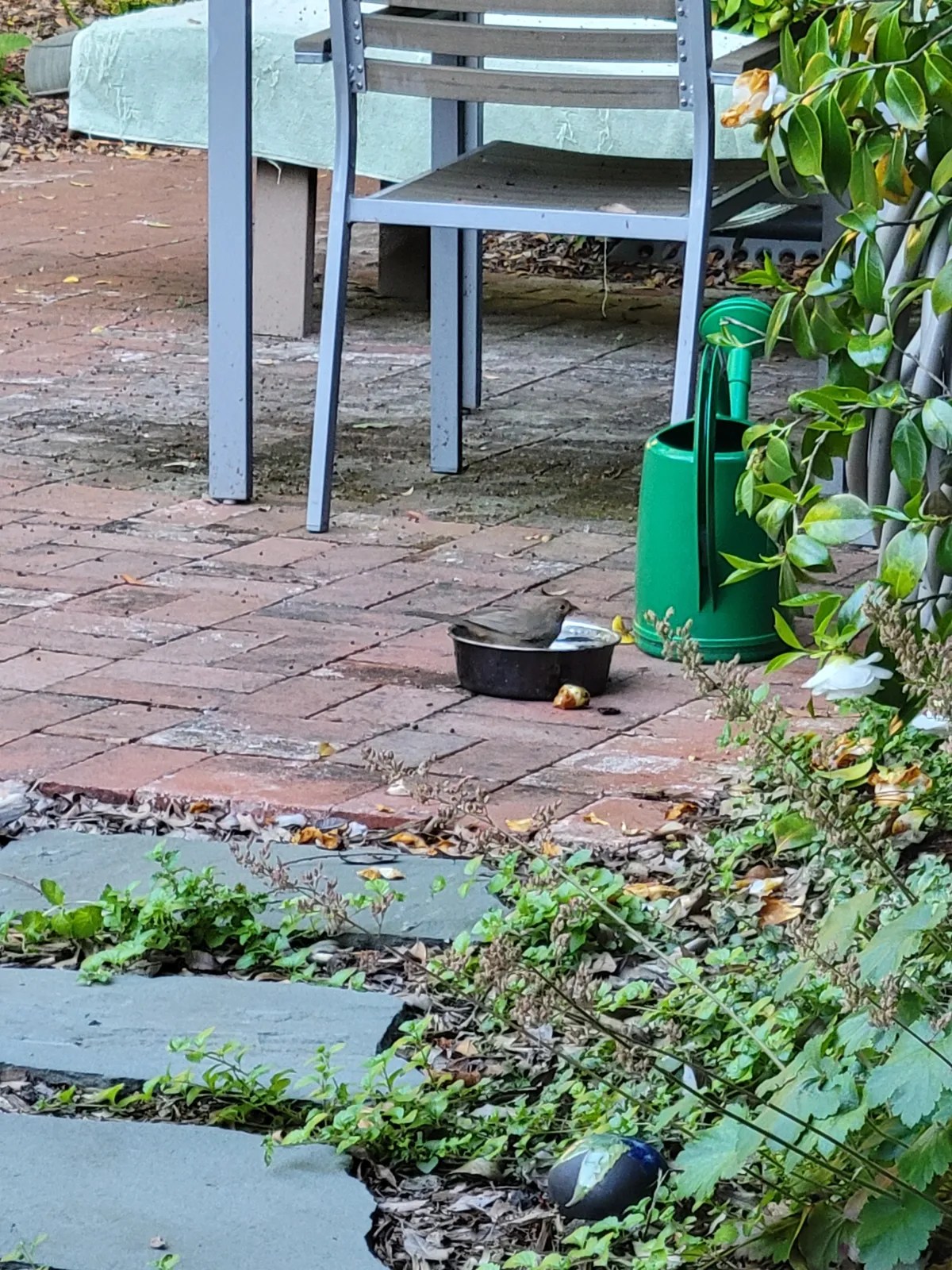
Trees and water (even a dog bowl!) will help birds to make their way in our area. I have put up a few bird boxes, but with mixed success. At least in my yard, they only work when they are in very out-of-the-way places. This bird box has never had an inhabitant. I guess it is too hard for the birds to sneak in and out of.
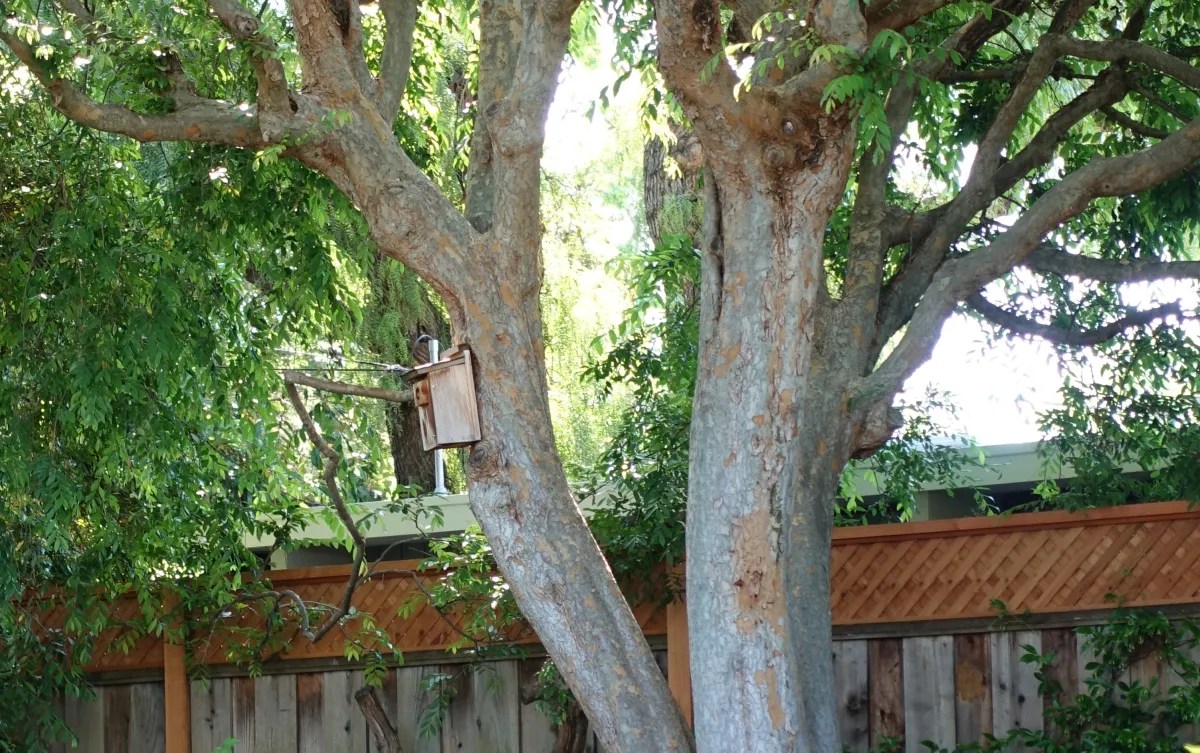
But a newer box buried in an oleander bush out front had a nest its first year.
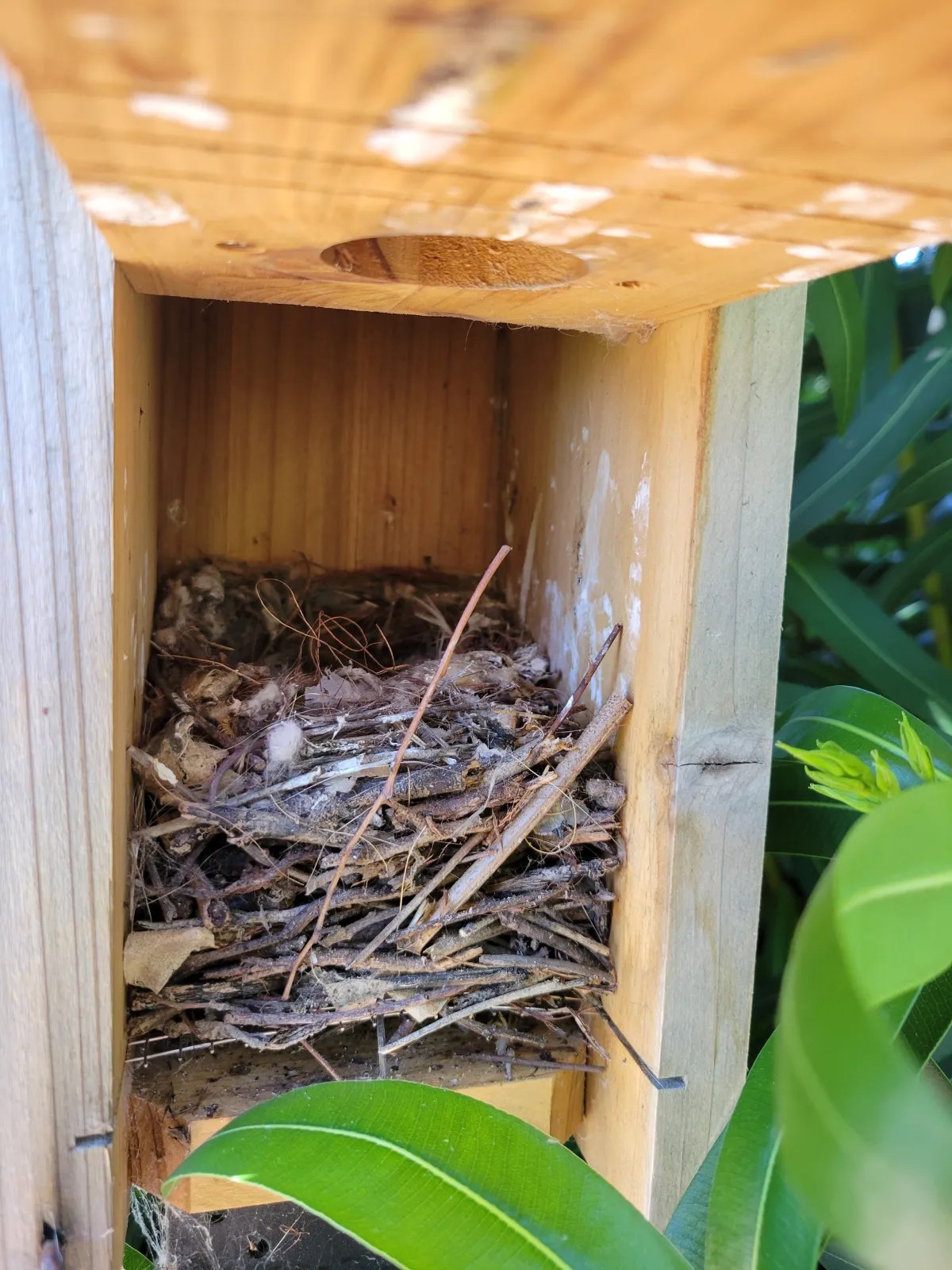
A Bewick’s wren family moved out a few weeks ago. They left one egg behind.
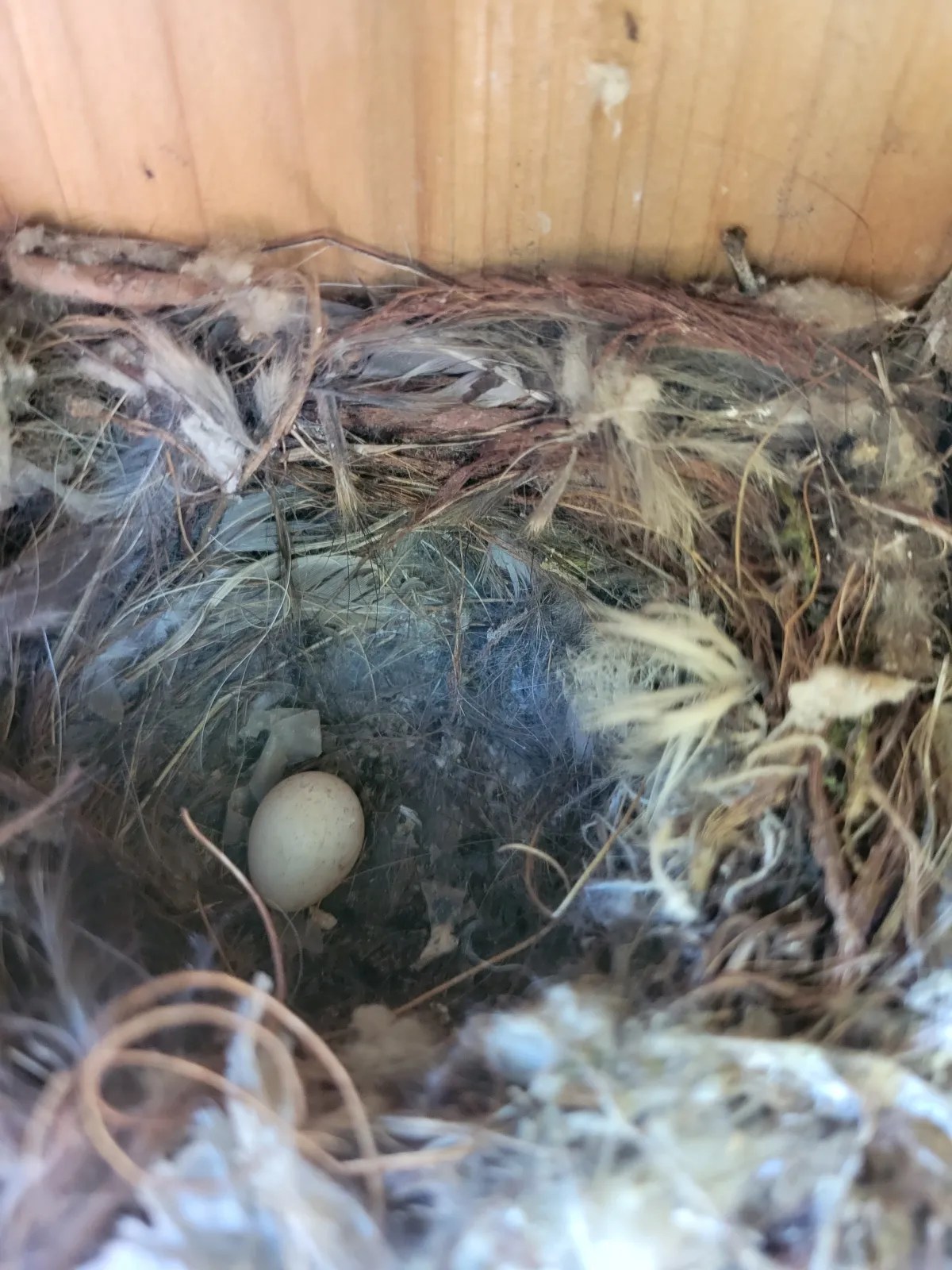
Many people don’t have time to sit in their yard or in a nature preserve for an hour to watch what goes on. But maybe once a year you could try it. For me, seeing the birds, insects, and butterflies going about their business was a reminder that there is a world of things struggling to make a life where we are also living. They need to find food, water, and safe spaces to raise their young.
If we can help them to do that, our world will be a richer place. A good arborist can help you select a manageable tree or two. Water is easy to provide. And bird boxes are available if you have a good place for one. Providing food means not only (clean) bird feeders, but also soil and plants where insects and caterpillars can thrive, since that is often what baby birds need.
We can do this. We just have to care. Spending an hour watching can be a step in that direction.
In the meantime, I need to find a solution for my glass window, especially when young birds are out and about.
If any of you have bird-related pictures that you’d like to share, from your yard or a preserve or …, you can find my email in my bio, and I will append your bird-related photo(s) to my blog with any comment you provide (and name if you’d like).
Update: Reader photos!
Here are some photos from a reader who says: “I sit in my patio almost every afternoon. I love seeing all the life going on.”
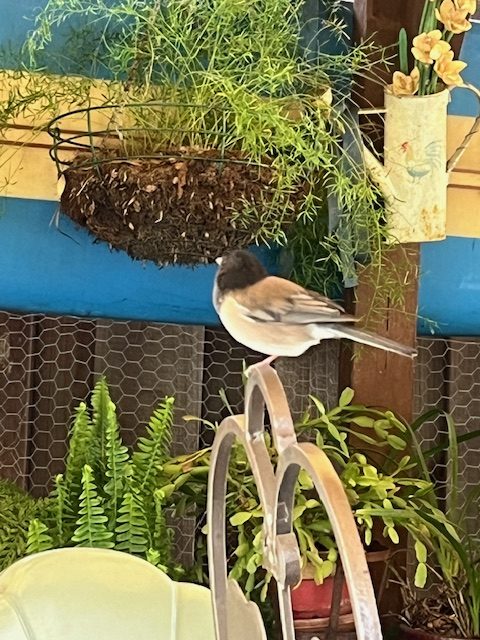
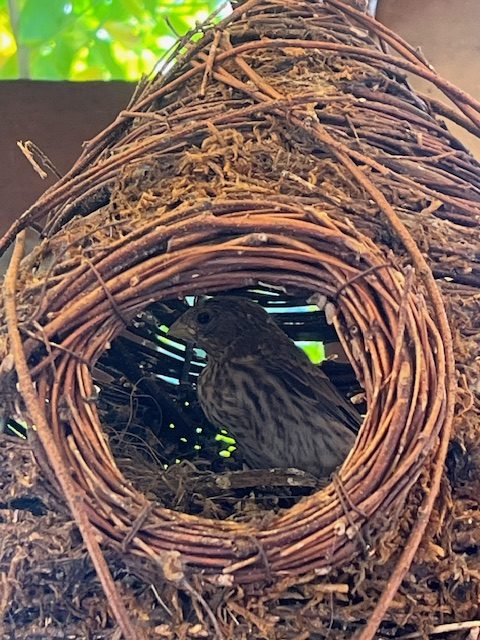
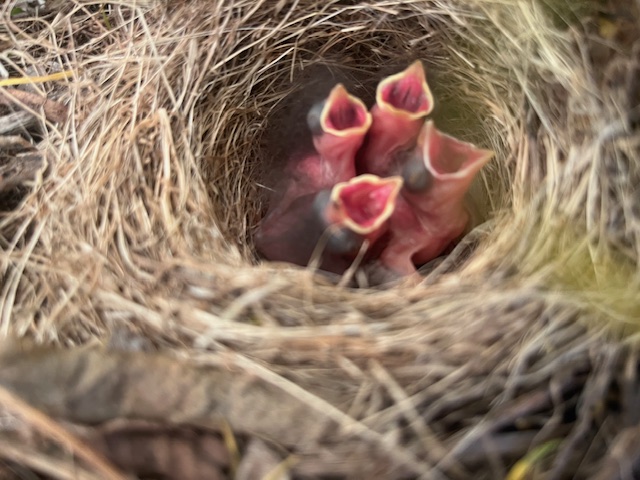
And here is a photo from a reader who has had good luck with nest boxes mounted on 4×4’s. A Bewick’s wren is poking its head out!
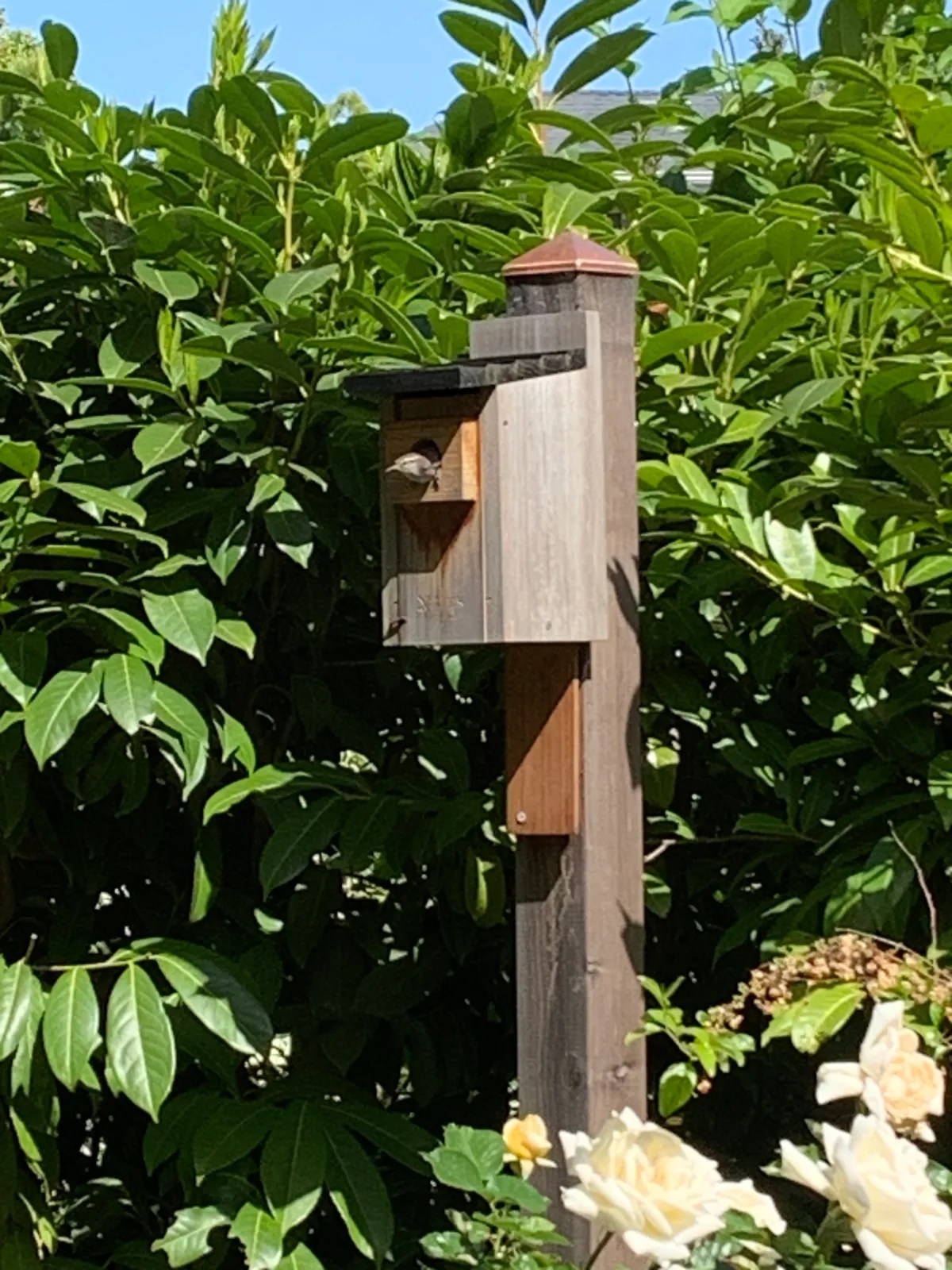
Current Climate Data
Global impacts (March 2024), US impacts (April 2024), CO2 metric, Climate dashboard
Want to be Notified of New “A New Shade of Green” Blog Posts?
Embarcadero Media is no longer sending notifications of new blog posts. If you would like to be notified, please send an email to notify@newshadeofgreen.com with “Subscribe” in the subject.
Comment Guidelines
I hope that your contributions will be an important part of this blog. To keep the discussion productive, please adhere to these guidelines or your comment may be edited or removed.
- Avoid disrespectful, disparaging, snide, angry, or ad hominem comments.
- Stay fact-based and refer to reputable sources.
- Stay on topic.
- In general, maintain this as a welcoming space for all readers.
Not Seeing Any Comments?
Comments are no longer shared across Embarcadero Media’s various sites. You can find most comments on the Palo Alto site, in case you would like to read and comment there. (Your login credentials should work on all of the sites.)
